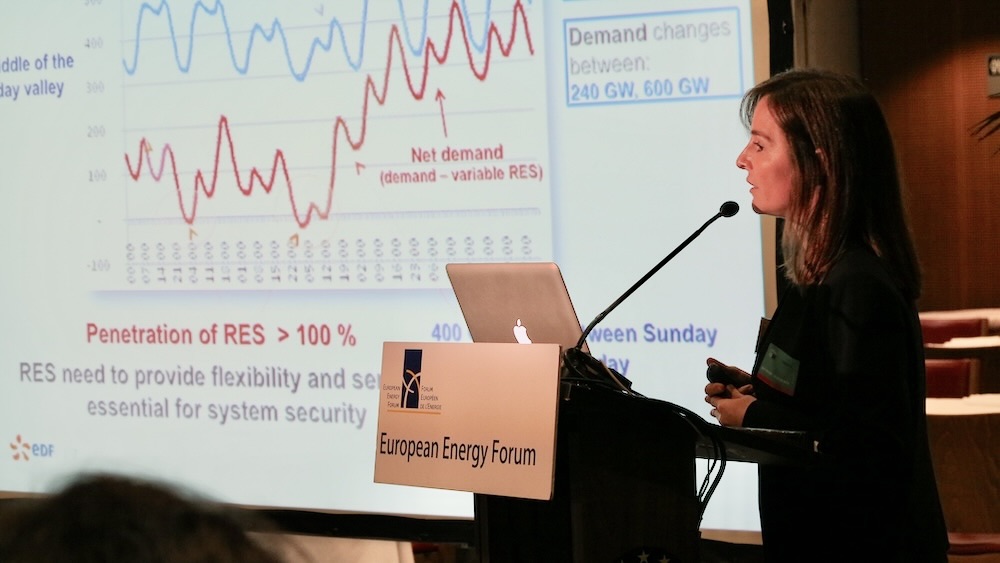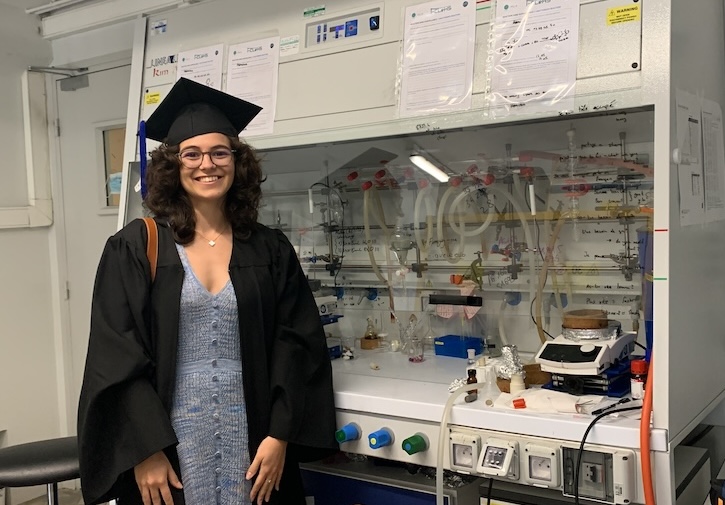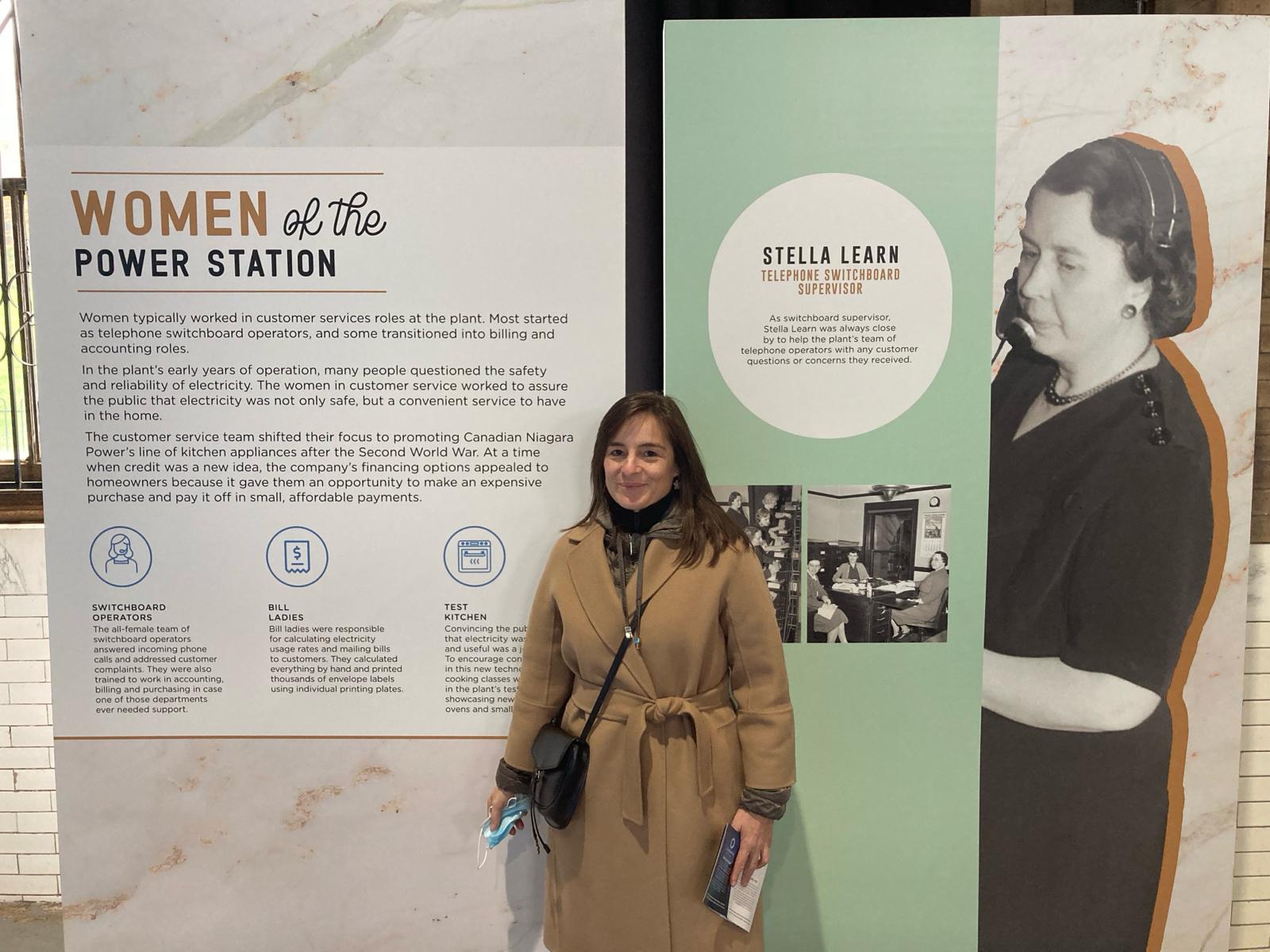When she learned that she’d been inducted into two of the world’s most prestigious science academies, Vera Silva felt, naturally enough, electrified. Earlier this year, the chief strategy and technology officer of GE Vernova’s Electrification Systems was awarded entry into both the National Academy of Technologies of France (NATF) and the National Academy of Engineering (NAE). “The personal recognition is amazing,” she says. “But it also means that both academies recognize the importance of what we’re doing in energy: building electricity networks for the future. This means an opportunity to share and build upon the experience we’ve had integrating renewables and enabling energy transition in Europe to the rest of the world.”
Both honors point to the singular role Silva plays in the movement toward integrating new technologies, modernizing electrical grids, and, ultimately, decarbonizing electrical energy itself. Her areas of expertise — electrical engineering, renewable energy, energy economics, power systems infrastructure — provide an unusually holistic grasp of this immensely complex endeavor. Silva’s is the kind of expansive vision the world will need as it adapts to the future.

It is a moment worth savoring. Silva is among 16 people selected this year by the NATF — whose members include three Fields Medal winners, five Nobelists, and several major CEOs and energy ministers — and she’s one of this year’s 21 professionals selected for technical accomplishments and leadership by the NAE, whose 332 international members also advise government and industry groups on engineering and technology.
What pleases her about the NATF induction, she says, “is that it’s very selective and it covers every segment of technology and science that applies to improving society.” She’s pleased to be included alongside luminaries like Esther Duflo in economics, Emmanuelle Charpentier in chemistry, and Alain Aspect in physics. But she’s particularly gratified to see both academies recognize someone like her, she says, “whose entire career has been devoted to electricity grids and energy transition, because these awards are a mix of the merits of the candidate and of relevance of the domain that they work in.”
They’re also a testament to how far Silva has come in a field that hasn’t always made things easy for women. A recent study found that fewer than a third of STEM professionals are female, and Silva herself has observed that women “need twice the legitimacy” of men, foreign women even more so. “I’m also the first Portuguese to join the NATF,” says Silva. “This shows others like me that they can get even the highest recognition in a foreign country.”

Finding Her Frequency
While the inductions seem to break a few glass ceilings simultaneously, they didn’t come without exceptional achievements in a crucial field over many years. Silva has blazed multiple paths since studying at the Faculty of Engineering of the University of Porto — becoming both the first engineer and the first Ph.D. holder in her family — and showed an almost astounding drive and focus on the profession from the time she was a child.
Even she is amused to recall the moment that revealed her life’s true calling. “One afternoon,” near her home of Vale de Cambra in Portugal, “I went on a picnic with my family, none of whom has anything to do with engineering, and my grandfather took us to a lake where there was a hydropower dam,” she says. “When we actually got to visit it, I was so impressed by the huge turbines, the generators, the giant walls, and everything else that right then I knew I wanted to be an electrical engineer.” She was 10.

At 14, she left her family for Porto, where she could attend the only high school that would prepare her for this kind of path, facing the first hurdle of closing the education gap between a small town and an elite school in the big city. Even then she dreamed of doing more studies abroad, which she says, “wasn’t possible for my first degrees, but remained in my focus.”
When she was 30 and already an assistant professor on a tenure track, she won a scholarship to study in England. “I think I was one of the few persons to resign from the job so that I could start again,” she says of packing up and starting anew. “Because I really wanted to learn more, I had to restart again several times.” Silva followed this passion to an illustrious career in three different countries — the first five years in Portugal, the next five in the U.K., and the last 12 in France, where she has worked for GE Vernova’s Electrification business since 2018.
While her colleagues cautioned her about the sacrifices, Silva says, “I was never afraid, I never felt stuck. I always had this faith that, because the energy transition was happening, there would be a need for good engineers.” Even with all the challenges facing women in a male-dominated industry, Silva says, “I knew there would always be a place for me. And if you believe in that, it happens.”

It happened for Silva, and she is proud to say it’s happening for her daughter, too, who is currently finishing a Ph.D. in biochemical engineering. “She’s working on cancer treatments that utilize some novel metals to improve chemotherapy treatments,” says Silva.
Silva says she still feels a spark around some of the more majestic expressions of her life’s vocation. “I still get tears in my eyes when I go to see, for example, the hydro plant in Niagara Falls,” she laughs. “It’s one of the very first ones that produced electricity at different frequency” — it was upgraded from 25 hertz to 60 hertz to align with the larger grid — “and when I happened to be there for the first time, I was looking at it and immediately got tears in my eyes, my partner laughing at me as I’m saying, ‘Look! The frequency is not the same!’”
